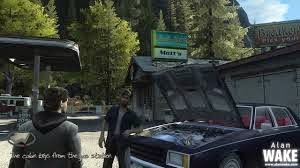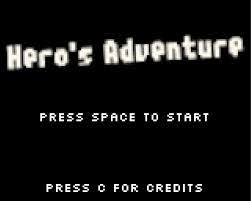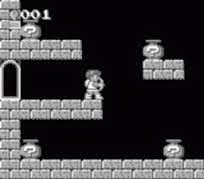Sometimes there's a game that I'm just really looking forward to. Sometimes it's a game that everybody says is great. Sometimes it's a game that despite how many negative reviews I hear, I just know they must be wrong because it looks like it'll be amazing (it's usually not). And sometimes it's something that nobody I know has ever heard of, but it looks like it's exactly the type of game I'm into. Then, sometimes the opposite is true. Sometimes there is a game that even though everything I read and everybody I talk to says it's great, I'm just not looking forward to it. And sometimes when I finally reluctantly get around to trying the game I realize what a fool I'd been to wait so long. This is the case for me with Hotline Miami.
In my reviews on
Wake and
Evoland I mentioned how retro styled pixel art games are so common now, they're almost as much of a cliche as toon shading was a decade ago. A few years ago, it was a shocking change of pace that brought with it fond nostalgic memories. At this point however, it's so common that I imagine many developers simply use it to look trendy rather than to make a statement, or possibly just to save time on the art. Hotline Miami uses an 8-bit NES inspired art style, and as much as I enjoy that art style and games from that era, every time I saw screen shots from the game it just looked uninspired. Luckily for me, I decided to try it anyway.

I suppose the best way to describe what makes Hotline Miami so much fun is to start by stating what it's not, so anybody with my misconceptions can look past them. Despite its NES styling, Hotline Miami does not at all play like an 8-bit game. The control scheme is a simple one, you can move, aim, and shoot, but aiming and moving are independent of each other, similar to a twin stick shooter. On the gamepad, right stick aims, right trigger fires or swings your weapon, and left trigger throws your weapon. If you're playing the PC version without a gamepad, the mouse cursor and buttons handle this while typical WASD movement is used.

These simple controls allow for some pretty flexible and complex gameplay. Each mission in the game consists of showing up at a location, killing everybody there, and possibly picking something up before leaving. What makes the game so fun however is that you're not told how to play it. You can bust into a room with machine guns blazing commando style, you can sneak around stealthily and take out the baddies one at a time, or you can get clever and try to distract and misdirect people to get them to separate into smaller easier targets. It's not uncommon to change your mind and start playing differently mid level because sometimes certain approaches are more effective. The game actually analyzes how you play and rates you on your play style at the end of each mission.

One of the more clever aspects of the game is how important the environment is. Line of site is very important for stealth reasons, and sometimes walls have windows in them that can not only be seen through, but shot through. More than once I thought I was safe walking down a hallway only to be mowed down by machine gun fire from a nearby office that I wasn't paying attention to. Doors are also a hugely important part of the gameplay. Not only do they block line of site, they can be used to knock down enemies. Often a room will have more than one guard in it, and taking out one of them while busting in the door leaves fewer for you to worry about when the fighting starts. Sound also plays a role in the game, as gunshots will alert others who will come to see what's going on. Sometimes you want to avoid this, but sometimes it can be used to your advantage to lure several guards into a trap.
.jpeg)
If you've looked into the game at all, you've probably noticed the strange animal masks and wondered what that was all about. Throughout the game, you awarded various masks, each with a special ability. Some make you more effective with certain types of attacks, or let you run faster, or prevent dogs from attacking you. My favorite was the horse mask which made hitting an enemy with a door fatal. For the completionists out there, the owl mask doesn't assist in gameplay at all, but does allow you to see the hidden letter in each level. Finding all of these hidden levels will unlock an alternate ending, but attempting this will make the game much more difficult.
Hotline Miami's audio is another area where it's obvious that it's not purely trying to milk the current retro fad. If you're expecting chiptunes and FM chirps you will be surprised. The sound effects are all modern digital samples, and the music tracks, while heavily 80's dance synth influenced, are all full audio recordings as well. Overall, the game's audio track brings back more nostalgia for movies of the 80's than for 80's console games.

The next area where the game strays from the typical retro graphics formula is surprisingly with the graphics themselves. Even though the entire game is rendered in 8-bit styled sprites, the game is not at all something that could have been rendered in 8-bit. The entire level rotates subtly as you move around, and your character rotates smoothly as you aim in any direction. Eerie lighting and post processing effects give the game a surreal and sometimes gritty feel, far beyond the reaches of the 8-bit hardware the sprites try to emulate. I questioned several times throughout the game why they even went the retro sprite route at all. I suppose that the game takes place in the 80's, and it's a jab at that, and obviously retro sprite games are popular right now, but I couldn't help feel that the game might have been more enjoyable with a less retro art style. Maybe something similar to The Binding of Isaac or something?

So now that we've covered what I was expecting that Hotline Miami isn't, let's talk about what I wasn't expecting that it is. Well, in a strange way, Hotline Miami is sort of a puzzle game. Not a
God of War style fight for a while and then solve a puzzle style game, but a game where figuring out how to kill your enemies is the puzzle itself. Each mission is confined to a single building, and each floor of the building is a checkpoint. You'll find yourself attempting each floor many times as you try to discover just the right method to take everybody out. Everything resets, so you can try over and over, getting a little farther each time, or getting stuck and trying a completely different direction. It's weird to think about knocking somebody out with a door, beating the next guy with a crowbar, then throwing the crowbar at the 3rd guy while you pick up the shotgun to let the bullets fly as steps in solving a puzzle, but in Hotline Miami, that's just how it works. What starts out as mindless fun quickly evolves into some real brain teasers.
Now to get controversial! Or at least, let's talk about controversy. Much like
Mass Effect, the first thing I ever heard about Hotline Miami was the controversy around it, or more specifically, around its trailers. To build up hype for the game, teaser trailers were released involving real life actors acting out the violence from the game. Let's make something clear. This is an extremely violent game. The trailers did a great job of conveying that so when the game came out, people knew what to expect. And thanks to the controversial buzz, the audience who would most enjoy the game knew about it well in advance.
So, just to be clear, I really did enjoy playing Hotline Miami. It's a great game that I had a lot of fun playing. It has a unique feel, and like the Deus Ex series, allows you to find the playing style you enjoy most and do that. I wouldn't recommend sitting your 5 year old kid in front of it, but I'd highly recommend playing it for anybody into fast paced violent action that requires as much strategy as it does reflexes.











.jpeg)















.jpeg)


.jpeg)





















.jpeg)


.jpeg)
